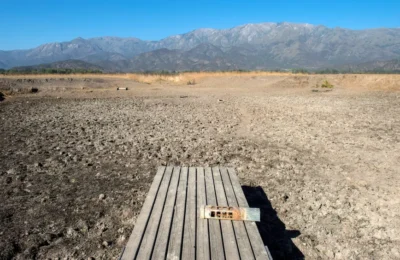Alan Thornett discusses the urgent need for the left to take up the issue of biodiversity.

Most on the left will have heard of COP26 – the major UN climate change summit in November in Glasgow.
Far less, I suspect, will have heard of another major UN conference taking place a month before – from 11-15 October – which is COP 15 of the UN Convention on Biological Diversity. It will be a two-part COP with the first being held electronically next month and the second in person April/May 2022 in Kunming China.
It has two main tasks. The first is to review its Strategic Plan for Biodiversity 2011 – 2020 adopted in 2010, entitled Living in harmony with Nature, which can be found at: https://www.cbd.int/sp/
That plan adopted 20 targets to be achieved by 2020. They included the following important examples, that:
- The rate of loss of all natural habitats, including forests, is at least halved and where feasible brought close to zero, and degradation and fragmentation is significantly reduced.
- All fish and invertebrate stocks and aquatic plants are managed and harvested sustainably, legally and applying ecosystem based approaches, so that overfishing is avoided, recovery plans and measures are in place for all depleted species, fisheries have no significant adverse impacts on threatened species and vulnerable ecosystems and the impacts of fisheries on stocks, species and ecosystems are within safe ecological limits.
- All areas under agriculture, aquaculture and forestry are managed sustainably, ensuring conservation of biodiversity.
- All pollution, including from excess nutrients, has been brought to levels that are not detrimental to ecosystem function and biodiversity.
- All invasive alien species and pathways are identified and prioritized, priority species are controlled or eradicated, and measures are in place to manage pathways to prevent their introduction and establishment.
- The multiple anthropogenic pressures on coral reefs, and other vulnerable ecosystems impacted by climate change or ocean acidification are minimized, so as to maintain their integrity and functioning.
The level of failure was catastrophic. In every single case the situation is dramatically worse than in 2010.
Its second tack is to agree a new set of targets for the next 10 years to be entitled the “Post-2020 Global Biodiversity Framework”. The UN’s mission statement in regard to this is as follows:
“The UN Biodiversity Conference will agree a new set of goals for nature over the next decade. It will set out an ambitious plan to implement broad-based action to bring about a transformation in society’s relationship with biodiversity and to ensure that, by 2050, the shared vision of living in harmony with nature is fulfilled.”
Living in harmony with nature by 2050 is a huge undertaking, much bigger than halting global warming – which is a prerequisite for it.
Today, species are becoming extinct between a 100 times and a 1,000 times faster than the natural or background rate that arises naturally over millennia. This situation is now widely recognised by scientists as the ‘sixth mass extinction of species’ in the history of life on the planet. It is the biggest extinction event the planet has faced since the demise of the dinosaurs 65 million years ago, and is a direct threat to the future of life on the planet, including our own.
This is the result of habitat destruction on a (literally) industrial scale, generated not just by climate change (which is massive) but by deforestation and agriculture practices – the biggest single cause – though to pollution both terrestrial and oceanic.
China
With part 2 of COP 15 taking place in Kunming, China will take over the presidency of the Convention (from Egypt) in the shape of its minister of ecology and environment Huang Runqiu. Runqiu has taken space in the current edition of Nature to set out his approach to the COP, which unsurprisingly is long on abstract statements but short of concrete commitments. He insists, for example, that: “biodiversity is a basic necessity for human survival and a strategic resource for sustainable social and economic development”.
China has a very long way to go on biodiversity conservation – even if it is showing more interest in environmental issues. The WWF Living Planet Report China in 2015 found that China was already consuming more than double its biocapacity, causing significant impact on the environment, including forest degradation, drought, soil erosion, water shortages, increased carbon dioxide and biodiversity loss.
We can add to this China’s appalling record in terms of the bush meat trade, the trade in endangered species, and the poaching and slaughter of animals for traditional medicine such as rhino horn and tiger parts. 100 million sharks are killed every year for the shark-fin soup industry.
The Report sees rapid urbanization as a major factor in this. “Economic growth in China is beyond its environmental and ecological capacity and is unsustainable.” Li Lin, the executive director of WWF China told the Report: “WWF believes China can do more to move towards a green economy and proposes that the nation manage natural capital better by using natural resources more efficiently, consuming energy more sustainably and responsibly growing its footprint in rural and urban areas.”
COP 15 participants are reportedly split as to whether to have a target to be achieved by 2030 in terms of the biodiversity situation. Some believe it would help. Others say it would distract from the work of implementing the new post-2020 framework, and that it is impossible to capture the complexity of ecosystems and species with a single metric.
The urgency of the biodiversity crisis needs to be pushed up the agenda including the agenda of the left. Although there has been some improvement in recent years the left is still a long way behind the curve on the issue. The exception to this – and it’s a big one – has been the emergence of Extinction Rebellion (XR), which has done more to push biodiversity up the agenda than any other sector of the movement. They have not only reflected ‘extinction’ in their name but in their public activities and the targets chosen for protests.
XR should be given full credit and support for this including for its projects and propaganda on the issue.


